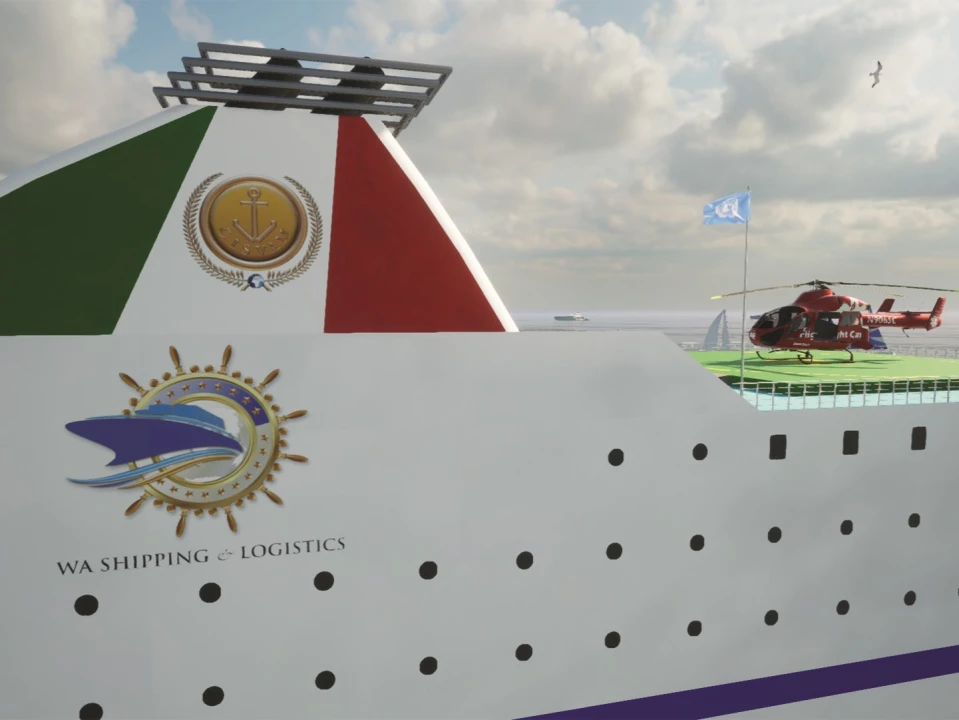Italy is known for many things around the world. Its history, for example, the cuisine, the art. However, Italians have many other qualities which, sometimes, people don’t immediately think about. Italians are inventors, engineers, architects, and entrepreneurs, who can look at the future and build based on their visions.
Mr. Claudio Paccanaro fell under this category when he understood the importance of global and cooperative healthcare, and created Medical Tourism Italy, pioneering the development of this business in the country. Italy has much to offer to the medical field, one of the country’s excellences, and here came another idea.
As it often happens, the spark that turns on the light needs darkness to shed off. This moment was in 2020, and this darkness was called the Covid-19 Pandemic.
At the time, Mr. Claudio Paccanaro already had decades-long experience building and working with hospitals and clinics. One of his companies patented the mini-hospitals, small modular units with all the medical equipment that, with time, can build a complete hospital using less space. Combining these features with the floating platforms created by CISVAM opens a universe of possibilities. There was only one missing piece of the puzzle, and that came in 2020 when a closed-up world needed a way to treat affected people in overflowing medical facilities. The country thought of using planes and trains, and Mr. Claudio Paccanaro thought of ships. Very different from medical boats used by the navies around the world, what he was thinking of was a full-scale hospital ship. At the time, he was also working with Fincantieri in Palermo’s port, specializing in transforming ships instead of dismantling them.
In this case, the ships to be dismantled would be container ships whose hulls would be saved and readapted for a completely new use. It took months to complete the layout but, at last, it was patented in Bruxelles and now needs government approval to begin the building. The project will be presented to the Parliament by the end of the year. It has 6 docks and is fully auto-sufficient, capable of purifying the air of the single rooms, disposing of wastewater, and purifying the water (this last task is vital, considering the quantity of water needed for something like dialysis). Not only that, but the ship is also equipped to host ambulances and helicopters, with rooms for the marine units and the medical staff. Keeping the medical and marine equipment separated was not easy and it was one of the most complicated parts to complete.
This project can be extremely useful in dramatic situations like a pandemic or a natural disaster such as a hurricane. A full-scale hospital ship can make cures and treatments available in places that have none providing the latest technologies and equipment. For example, in the years needed to build a “regular” hospital the technology with which it was designed could become obsolete. This doesn’t happen with the hospital ship, which takes a few months to complete and can be equipped with the most advanced apparatus.
Now the dots connect: once the ship is operational, it can undertake a sort of scouting mission, during which it can reach the destination and provide all the necessary aid. In the meantime, the mini hospital can be assembled on land or, in case that is not a suitable option, on the sea using the floating platforms we have mentioned before. Once everything is built, the ship can leave, providing the same extraordinary service in another town or area in need. Another important feature of the ship is its extreme flexibility. This is vital considering the difference in services and assistance it might have to grant: natural disasters require different specializations from one another, never mind from a completely different situation like a pandemic. The ship can be equipped accordingly not only with machinery or staff but also performing structural changes in a short amount of time.




